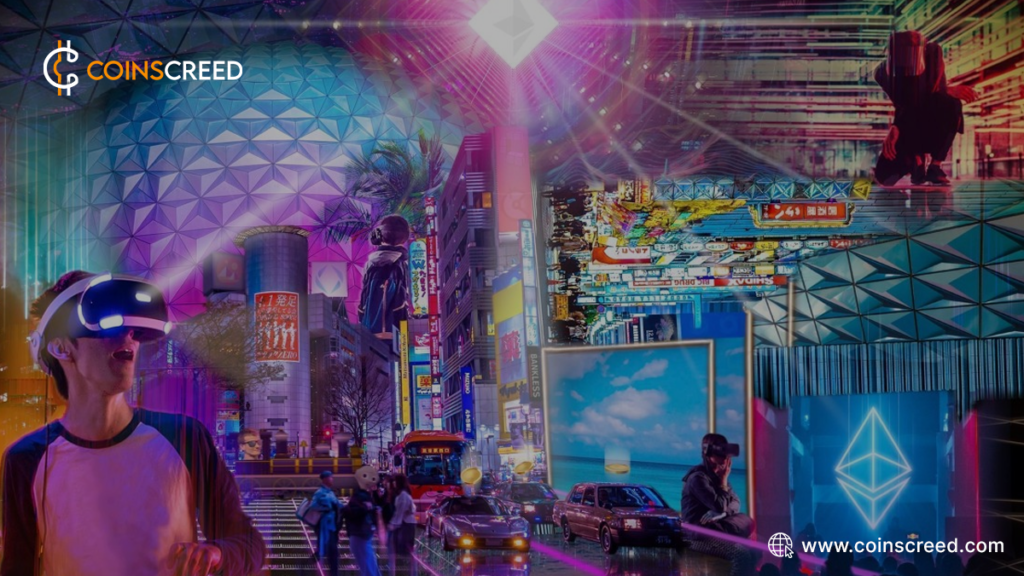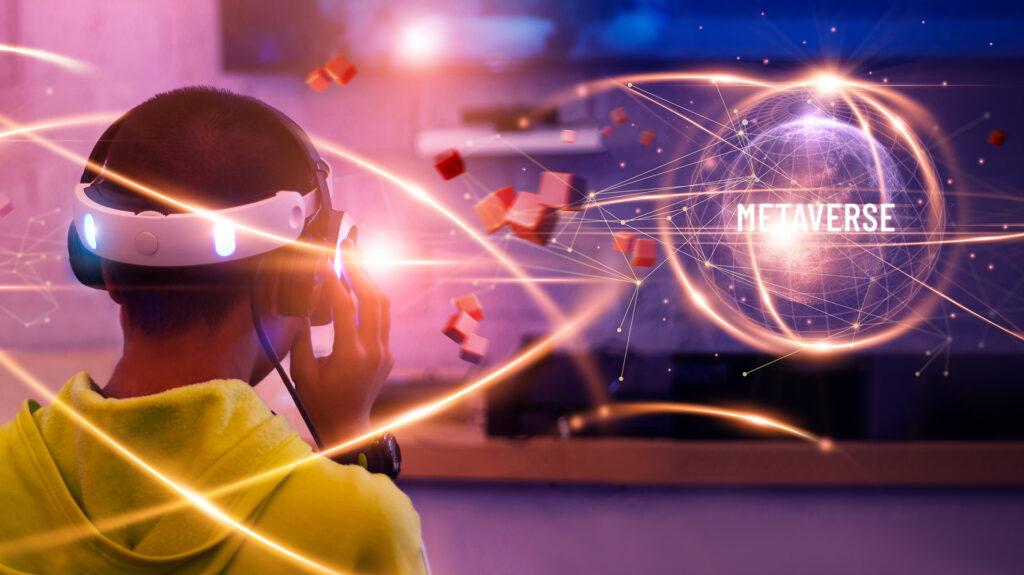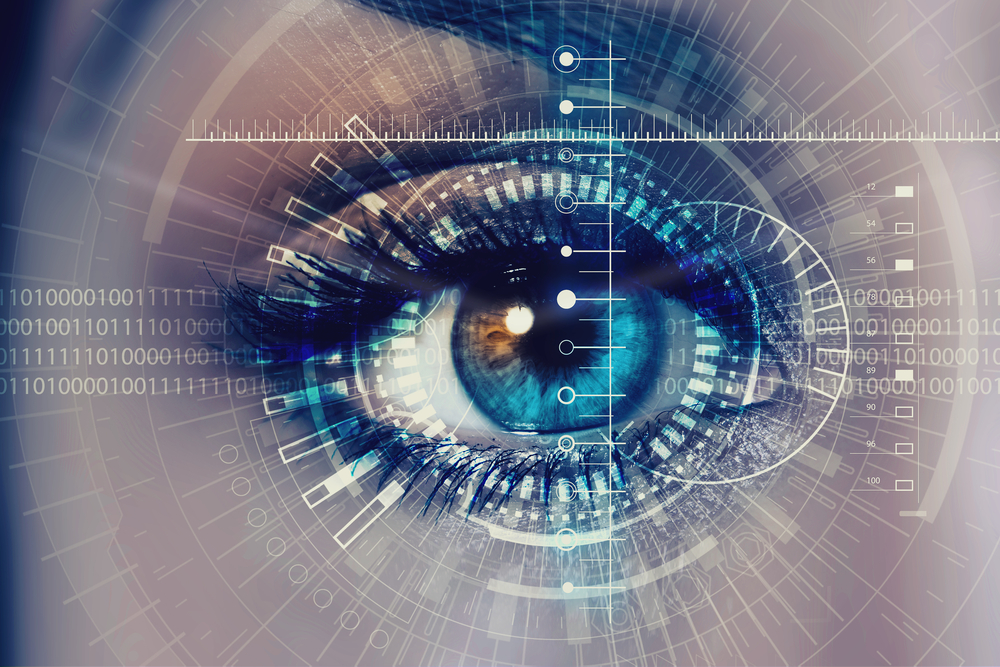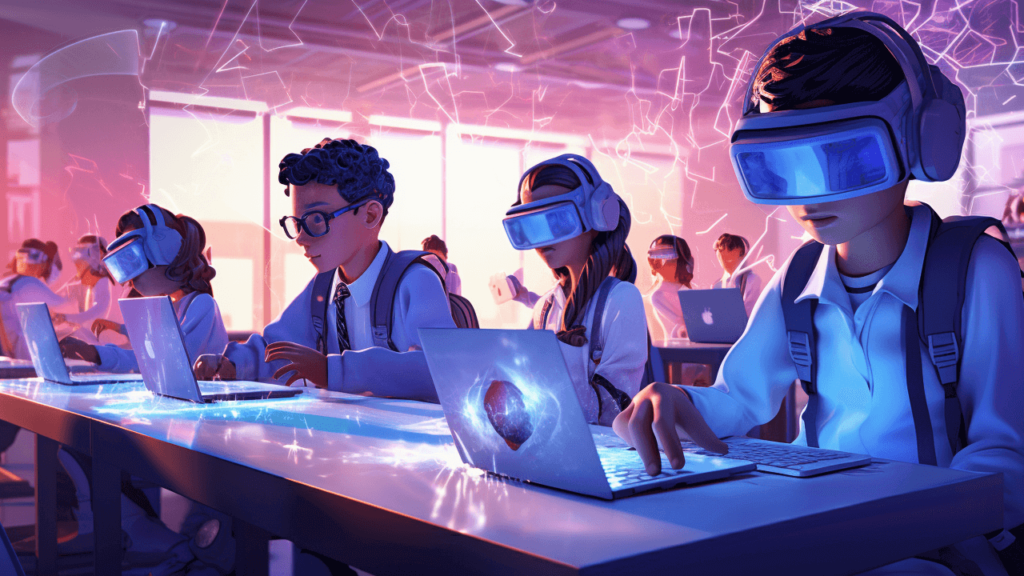In recent years, NFTs and digital assets have been innovative developments extending beyond art and conventional finance. This article discusses how NFTs and digital assets revolutionize trade in the Metaverse.

The Metaverse may sound like a magical place from the future, but it’s actually here, and anyone who wants to explore digital worlds and knows how to use a computer can get there.
What’s more, you can even make money in this digital world.
Understanding Non-Fungible Tokens (NFTs)
Non-fungible tokens (NFTs) are one-of-a-kind digital assets demonstrating ownership or authenticity of specific products or material, such as art, music, in-game goods, films, etc.
Each NFT on a blockchain is unique and verifiable, making them suitable for representing one-of-a-kind things.
Unlike fungible cryptocurrencies such as Bitcoin or Ethereum, NFTs are not interchangeable, providing ownership security and transparency.
NFTs have unique qualities that distinguish them from fungible cryptocurrencies such as Bitcoin and Ethereum.
Here are several essential characteristics that define NFTs:
- Non-fungible
- Indivisible
- Unique
- Ownership verification
Non-fungible
In the case of fungible cryptocurrencies, one Bitcoin can be traded for another because their value is always the same. In the case of NFTs, each asset has a digital signature, making it impossible to exchange one for another.
Indivisible
NFTs cannot be subdivided into smaller units. Unlike cryptocurrencies, which allow you to send fractions of a Bitcoin or Ethereum, an NFT must be purchased, sold, and owned.
This feature is critical for preserving the integrity of digital assets, guaranteeing that a unique object remains intact and its worth is retained.
Unique
Each NFT has distinct qualities that set it apart from other tokens. These traits are frequently recorded in the token’s metadata, which includes precise information on the asset’s characteristics, history, and origin.
This uniqueness is crucial for the digital collectibles market because it allows each object to be identified and valued separately based on its distinctive characteristics and rarity.
Ownership verification
NFTs employ blockchain technology to publicly and irreversibly record ownership. This feature simplifies determining who owns an object and tracing its ownership history.
The blockchain functions as a decentralized ledger that is available to anyone.
However, it cannot be altered fraudulently, providing solid proof of ownership, which is especially useful in the digital domain, where duplication and piracy are significant problems.
Understanding Digital Assets
A digital asset is everything created and kept digitally that is identifiable and discoverable and has or offers value. As technology advances, digital assets have grown in popularity and value.
Data, photos, video, textual content, and other digital assets have long been recognized as having ownership rights.
Most digital things, including a company’s brand, can be valued, monetary or intangible.
Some digital things, such as a family photo snapped with your phone at a gathering, may be helpful solely to the originator or one person. Others may be valuable to a much larger audience.
In the past, organizations owned and leveraged digital assets like data or scanned documents to generate value.
However, digital assets were again redefined with the introduction of blockchain and cryptocurrencies in 2009—tokenization on blockchain-enabled value creation from anything in digital form.
Digital assets such as cryptocurrencies, images, manuscripts, data, and papers have become essential. A digital asset is simply anything that demonstrates ownership and value.
They’re becoming an integral component of our personal and professional life. Digital assets allow us to express ourselves creatively and discover new possibilities.
So, if you have been following closely, you would notice by now that it’s safe to say that NFTs are a form of digital assets.
How NFTs and Digital Assets are Revolutionizing The Metaverse
NFTs and digital assets have practical applications in the Metaverse across industries, transforming digital ownership and trade approaches.
Here are some unique ways NFTs and digital assets revolutionize trade in the Metaverse.
- Virtual events and experiences
- Gaming and virtual assets
- Digital identity and customization
- Education and knowledge sharing
Virtual events and experiences

NFTs and digital assets are revolutionizing virtual events and experiences by allowing organizers to tokenize access and resell them as unique digital commodities.
These NFTs contain tickets to virtual concerts, conferences, exhibitions, and other benefits such as unique materials or goods.
Platforms like Nifty Gateway and Rarible enable the selling of digital tokens that artists and brands can use for virtual or actual events and concerts.
For example, the rock band Kings of Leon published their current album as an NFT on Rarible, giving fans a unique opportunity to acquire a digital copy of the record and rare live concert privileges such as lifetime front-row seats.
This creative release strategy sparked interest and engagement in the music industry. This strategy generates new revenue streams and increases audience engagement by providing collectible, limited-edition experiences.
Gaming and Virtual Assets

In blockchain-based video games, NFTs represent tradable in-game products, allowing users to own, sell, and trade virtual assets like skins and collectibles.
In traditional video games, a centralized authority manages the distribution, ownership, and other aspects of in-game content.
However, in the Metaverse, NFTs and digital assets provide consumers complete control over their virtual products, which they can use or trade on other platforms.
Games like Axie Infinity and Cryptovoxels demonstrate how blockchain technology has transformed gaming and virtual worlds.
Axie Infinity, a Pokémon-inspired game, allows users to collect, breed, and combat Axies represented as NFTs.
This structure provides for genuine ownership of in-game assets, encouraging a player-driven economy where users can earn bitcoin by interacting with the game’s ecology.
The ability to exchange Axies and earn tokens shows a decentralized virtual economy where players have significant control and ownership of their digital assets.
Cryptovoxels, another amazing gaming metaverse, is a decentralized virtual environment built on the Ethereum blockchain that allows users to buy and develop virtual land parcels using NFTs.
This platform encourages user innovation in creating, personalizing, and monetizing virtual properties, thereby pioneering a decentralized real estate market.
Digital identity and customization

In most cases, identity verification is based on centralized databases vulnerable to hacking.
On the other hand, NFTs provide a one-of-a-kind and secure method of managing and monetizing digital identities and personal brands on the 3D internet.
NFTs and digital assets generate unique, verifiable digital evidence of identification on the blockchain that can be used for verification in various situations, such as while transacting online or accessing digital services.
ENS (Ethereum Name Service) and Unstoppable Domains are changing digital identity in the metaverse market by providing NFT-based domains that read like real names.
ENS operates a decentralized registry on the Ethereum blockchain, allowing users to register and trade programmable domains that can be integrated into decentralized apps.
These domains also serve as digital identities, storing critical information throughout the Web3 ecosystem.
On the other hand, Unstoppable Domains provides easy-to-purchase domains with extensions such as “.crypto” and “.wallet,” which are owned permanently.
Both solutions improve domain use and ownership, representing substantial advances in decentralized identification in the Web3 space.
Education and Knowledge Sharing

In the education sector, NFTs are used to tokenize educational information, allowing educators to develop, distribute, and sell courses and resources in a decentralized and safe manner.
This tokenization of educational assets will enable educators to convert their expertise and educational resources into NFTs, making them unique and tradable on digital networks.
NFTs can also generate secure and tamper-proof certificates, allowing learners to demonstrate their credentials.
For example, the Massachusetts Institute of Technology (MIT) uses blockchain technology to create digital diplomas, giving students an unchangeable educational achievement record.
It provides users control over their data and allows them to share it with anyone securely.
How NFTs and Digital Assets are Revolutionizing Trade in the Metaverse
More specifically, here are some ways NFTs and Digital Assets impact trading activities in the Metaverse;
- Virtual art and collectibles
- Gaming
- Virtual real estate
- Fashion and accessories
- Social experiences
Virtual Art and Collectibles
NFTs are used to buy, sell, and exchange digital art and collectibles, generating new revenue streams for artists while providing collectors with unique, verified assets.
Gaming
In-game assets like skins, weapons, and characters are being tokenized as NFTs, allowing gamers to own, sell, and monetize their virtual stuff across multiple games and platforms.
Virtual Real Estate
Users purchase virtual land and properties, develop them for commercial use, host events, or simply invest in them in a manner similar to real estate transactions.
Fashion and Accessories
Virtual fashion goods and accessories are sold as NFTs, allowing users to personalize their avatars and participate in metaverse fashion shows.
Social Experiences
NFTs improve social connections in the Metaverse by providing unique avatars, exclusive access to events, and membership in virtual groups and communities.
Final Thoughts
NFTs will be the backbone of the Metaverse and change the way people own, trade, and interact with the Metaverse.
As this virtual world changes, NFTs and digital assets will be the digital keys that open you up to new experiences, business possibilities, and social interactions.
But figuring out how to deal with the Metaverse’s challenges is essential if we want a sustainable, fair, and inclusive future.
As we move into this new age, NFTs and digital assets have endless potential in the Metaverse. They can be used by creators, collectors, and participants in many ways.
